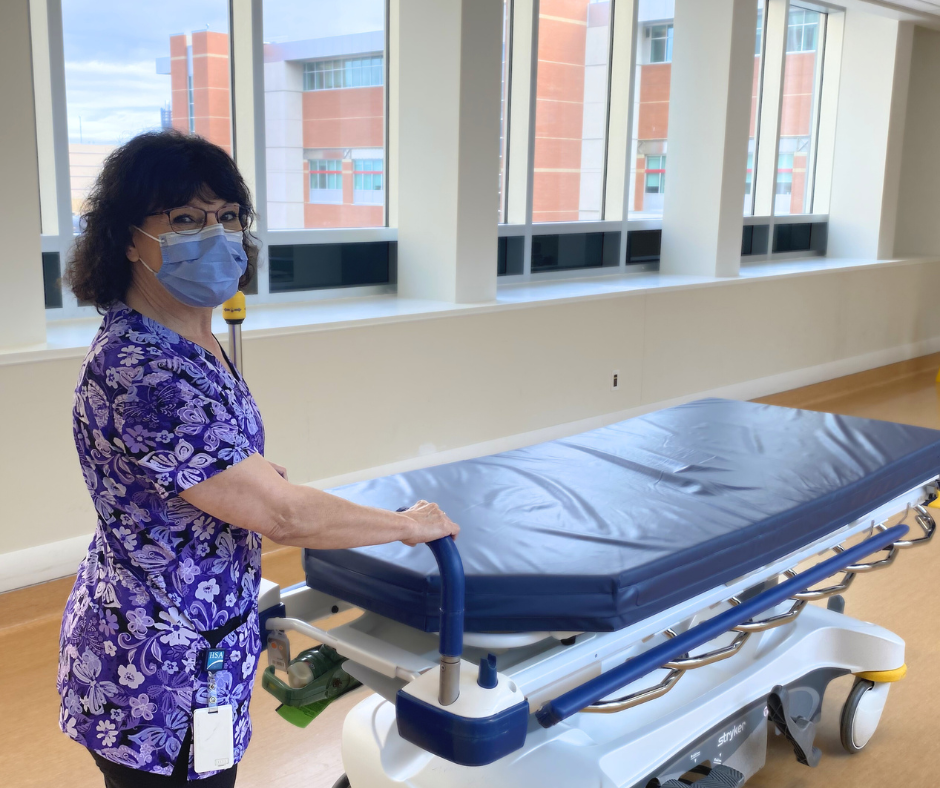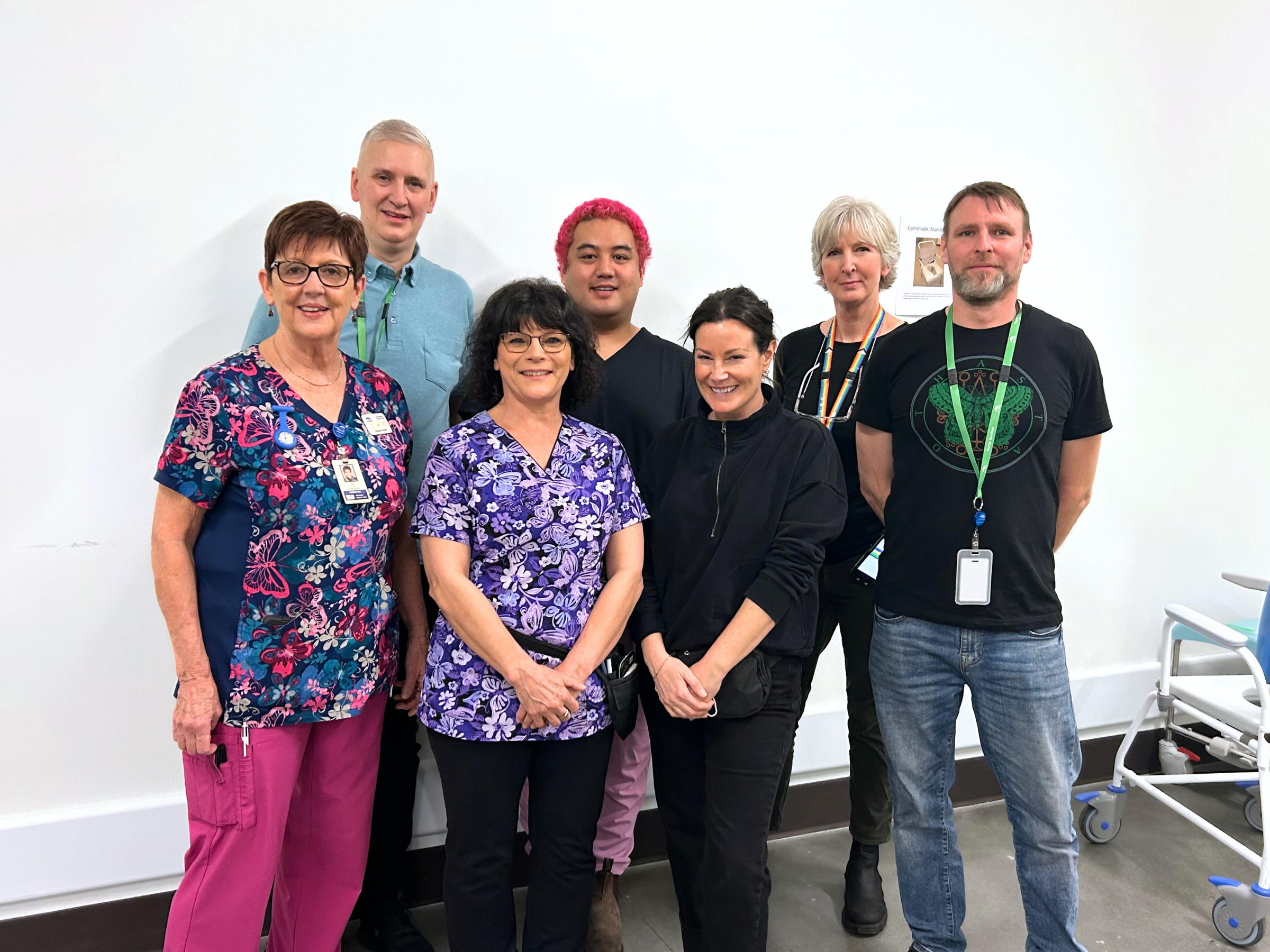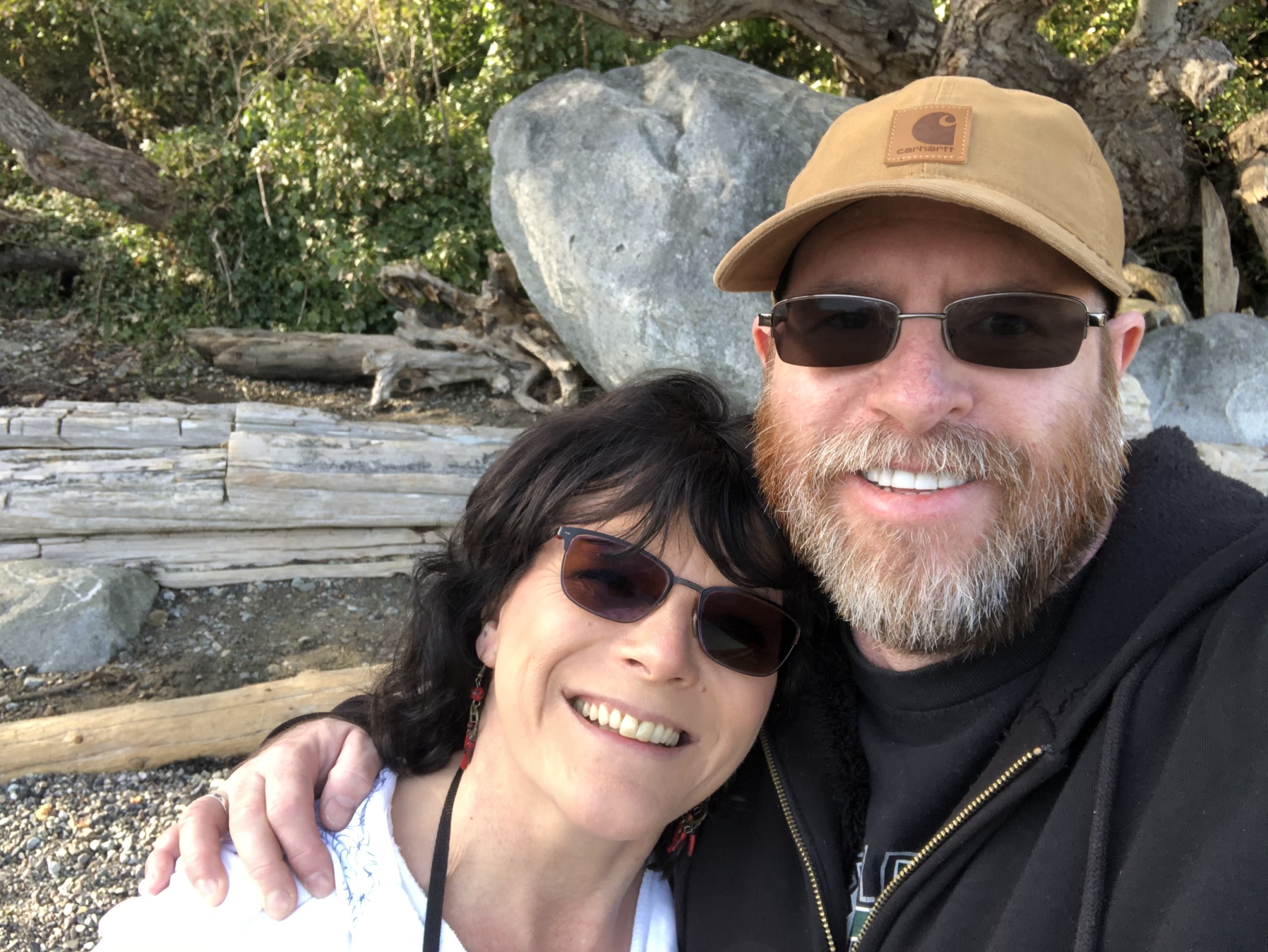
Carol Martens:
Patient Porter, wife, human
Seven and a half years ago, a friend told me about a temporary Patient Porter role at Royal Jubilee Hospital, saying, “Carol, you’ve got to try that job. It’s for you!” They felt it would be a good fit because I love to walk, and I love people. They were right: I took the temporary job, and the rest is history. I love it. A hundred percent.
I knew porters pushed patients around, but there’s so much more to it; the engagement with patients is just…there is nothing like it. We introduce ourselves when we enter a patient’s room and let them lead the way on how much they want to open-up and talk as we move them through the hospital. You can really read if they are feeling sad or nervous. It’s nice to put a smile on somebody’s face and know that you helped ease their concerns ahead of a test or procedure. You want to comfort them, and ensure they are comfortable: if they want their head up a little more, you gently lift the stretcher or place a pillow. Once they are safely on the stretcher, it’s wonderful to be able to offer a warm blanket. As soon as you drape it over them, they’re like, “Oh!” I think it really helps calm the nerves. When you’re rolling down the concourse, you want to go nice and easy over any bumps, and you warn them, “We’ve got a bump coming!” Sometimes a little joke comes out; I might tell them to keep all appendages inside the stretcher during transport. We once had a porter on our team who sang to patients, which was so sweet. It’s a rewarding job. You’re with the patient, you’re helping somebody, and it means a lot.
It’s nice to put a smile on somebody’s face and know that you helped ease their concerns ahead of a test or procedure. You want to comfort them, and ensure they are comfortable.”
“The job can be very physical—you’re pushing, pulling, it’s a full body workout. Often, I am walking about 20 kilometres each day.”
In our department, we are a team. Patient porters support each other often when moving people, and material porters are supporting the patient, running any equipment they may need in their rooms from walkers to privacy curtains. The job can be very physical—you’re pushing, pulling, it’s a full body workout. Often, I am walking about 20 kilometres each day; material porters walk even more than that, as they’re zipping here and there around the hospital moving smaller items. The most important thing they do is the blood calls: running to the blood bank, holding it in a way that the blood won’t spoil, and taking it to wherever it’s needed in the hospital. It’s vital work.
We always feel like we can ask for help and we always try to be there for our coworkers. We do a risk assessment when we first go into a patient’s room to see if we can manage on our own or need support. I always feel like I can ask for help, our team is wonderful.
It’s exciting to be acknowledged through Porter Appreciation Week; we are a large part in keeping hospital operations running smoothly, and it’s so wonderful to be recognized for that.
I still love walking outside of work, but the last thing I want to do is go to the gym! I enjoy connecting with friends. I will grab a girlfriend and hit the walking trails, or head to a pub for nachos and wings.
My husband Steve and I love going to Willows Beach. We’ll grab a coffee, bring our spotting scope, and watch the ships go by. Or drive down to Ogden Point when the cruise ships are in, we always love to do that.
We are high school sweethearts. I was born and raised on Salt Spring Island, and he moved there when he was 12 or 13. It wasn’t until a few years later that we got together, and it just went from there. This May we will celebrate 32 years of marriage and 43 years together.
I’m so thankful for the support of my husband at home, and then to be able to go to work and be surrounded by the team there. With a team, oh my gosh, you can accomplish everything.
They are humans first, who put other humans first.
More than 8,900 caregivers and staff work around the clock in our Victoria Hospitals
#HumansFirst is dedicated to sharing the stories from behind our hospitals’ frontlines. These stories remind us that those who provide care and keep the lights on in our hospitals also have lives outside of them. They have family and friends, they enjoy hobbies and interests, and they have all lived through their own personal triumphs and heartbreaks. Like all of us, they are human, and they have a story to tell.







